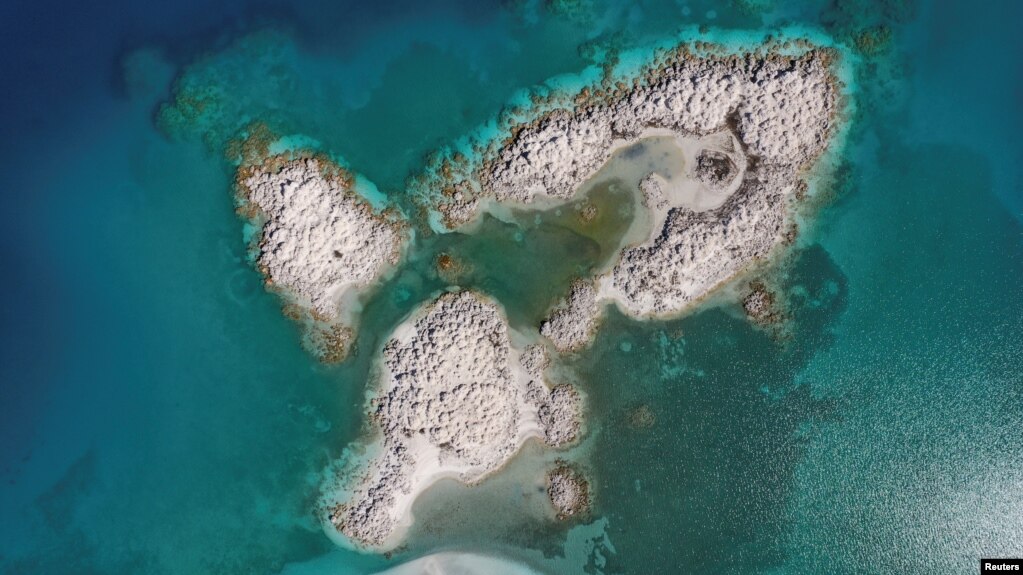
A general view of an exposed island of old microbialites at Salda Lake in Burdur province, Turkey, March 1, 2021. The official Twitter account of NASA Earth mentioned lake Salda in their tweet a day before NASA rover Perseverance touched down on Mars.
The American space agency NASA recently landed its robotic explorer Perseverance on the surface of Mars. Now, scientists are using information gathered at a lake in southwest Turkey to help them search for signs of ancient life on the distant planet.
NASA says the minerals and rock sediments at Lake Salda are the closest match on Earth to those around Jezero Crater on Mars. The spacecraft landed in Jezero Crater and it is believed to have once been flooded with water.
Information gathered from Lake Salda may help the scientists as they search for signs of ancient microorganisms in sediment around the crater.
A team of American and Turkish scientists carried out research in 2019 around the edges of the lake. Scientists believe that the sediments around the lake came from large deposits formed with the help of microorganisms known as microbialites.

This illustration shows Jezero Crater — the landing site of the Mars 2020 Perseverance rover — as it may have looked billions of years go on Mars, when it was a lake. An inlet and outlet are also visible on either side of the lake. (Image Credit: NASA/JPL)
The team supporting the Perseverance spacecraft wants to find out whether there are microbialites in Jezero Crater.
They will compare the sediments from Lake Salda with carbonate minerals discovered on the edges of Jezero Crater. Carbonate minerals are made from carbon dioxide and water, two important elements of life.
Thomas Zurbuchen is the associate administrator of NASA. He told Reuters, “When we find something at Perseverance we can go back to look at Lake Salda to really look at both processes, (looking at) similarities but equally importantly differences that are really between Perseverance and Lake Salda.”
“So we are really glad we have that lake, just because I think it will be with us for a long time,” he added.
I’m Jonathan Evans.
Words in This Story
sediment –n. material that sinks to the bottom of water
deposit –n. an amount of a material that builds up over time on a surface such as the earth
Comprehension Quiz
What are carbonate minerals made from?